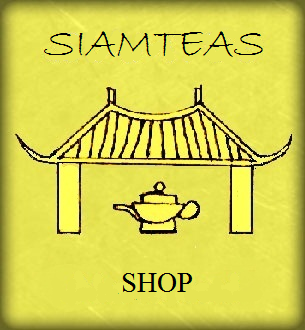Tea cultures have basically formed on the basis of two vectors. One of these is the spread of the tea plant in its various small and large-leaved varieties and/or cultivars. The other one are the ancient trade routes of tea, at whose stations and end points tea gained a foothold. At this, a country or region’s respective mother culture always shapes the pertinent local tea culture.
In order to understand a specific tea culture, we therefore first have to know how tea originally got there. In other words, is it a producer country or did the tea get there by trade? Also, we need to develop an understanding of the respective mother culture in order to understand the specific characteristics of the local tea culture. This includes a basic knowledge of the local religion, political history and resulting social structures. It also includes a feeling for the mentality of the people in the country or region in question.
Therefore, we’ll first explore the spread of the tea plant within China and surrounding regions of South East Asia.
Yunnan – the Cradle of Tea?
The southern Chinese province of Yunnan is generally considered as the tea plant’s place of origin. The region is famous to this day for its Pu Erh teas, made from Yunnan’s native large-leaf tea tree varieties. As for Assam, there is evidence that the tea tree got to northern India from China first. Nevertheless, the botanical name of the large-leaf tree type of Camellia Sinensis is “Camellia Sinensis Assamica“.
There are also prevalences of native large-leaf tea tree varieties in the regions bordering Yunnan. For example, the areas of Southeast Asia corresponding to today’s Laos, Myanmar, Thailand and Vietnam. This suggests that Yunnan cannot claim the title “Cradle of Tea” for itself alone.
Spread of the Tea Plant within China
From Yunnan, we can trace four paths of the spread of the tea plant to other regions of China. These lead from Yunnan via nowadays provinces
- Guangxi and Guangdong to Hainan
- Guizhou, Hunan, Jianxi and Fujian to Taiwan
- Sichuan, Chongqing, Hubei and Anhui to Jiangsu
- Sichuan and Shaanxi to Henan
To this day, the regions covered by these paths correspond to China’s main tea cultivation areas. The shown lines of spread of the tea plant within China are of essential importance for understanding the development of different tea plant varieties. This is because the tea plant – and with it its leaves – grew smaller and smaller along these lines. For example, we find intermediate stages of this development – so-called half-tree tea bushes – in the Fenghuangshan and Wuyi Mountains. And we find the smallest tea bushess and leaves at the endpoints of these spread lines. That is, in Hainan, Taiwan, Jiangsu and Henan.
Accordingly, we owe China’s wealth of different tea plant varieties to this development. However, the picture is not quite as uniform as these lines might suggest. Rather, this is just a strong trend. For example, there are up to 15 meters high, large-leaved tea trees existing in Taiwan, too.
The Chinese Tea Culture as the Mother of All Tea Cultures
From the described evolutionary spread of the tea plant in China evolves the world’s most ancient tea culture. At this, our perception of the Chinese tea culture as uniform despite its geographical diversity is primarily due to the imperial court’s centralising effects in former times. An illustrative example for this are the imperial tribute teas, which were customary from the age of the Tang Dynasty (618-907). When the Ming dynasty’S first emperor, towards the end of the 14th century, ruled that tea should no longer be processed as a powder, but rather tributed to the court in the form of whole leaves, this fundamentally changed the entire Chinese tea culture.
Tea received much less attention in the other above-mentioned cradle countries of the tea tree. While the tea culture in China was subject to proactive promotion and development efforts by the imperial court over centuries, the picking of tea leaves from wild tea trees in the areas of nowadays Laos, Myanmar, Thailand and Vietnam remained reserved to local hill tribes over the whole of that period. Accordingly, tea cultivation and tea processing received no central promotion in these regions. Accordingly, the development of tea cultures there remained limited to individual areas and the cultures of local tribes. However, because of the lack of written languages, there are no relevant traditions. Without such tradition, on the other hand, no sustainable tea culture could develop in these places.
This is how the Chinese tea culture, developing over millenniums, became the mother of all tea cultures. This also explains why, to this day, everything related to tea originally comes from China. Likewise, other national or regional tea cultures did not result from the natural occurrence of native tea plants. Instead, they – more or less – all came about through the trade in tea from China. Therefore, our next lesson’s topic is:
Land and Sea Trade Routes of Tea from China to Europe, Russia and the Middle East
One more thing, on my own account…
Do you like this article? Support the maintenance and further development of “My Little Tea School – The ABC of TEA” through your shopping at

from all over the world





